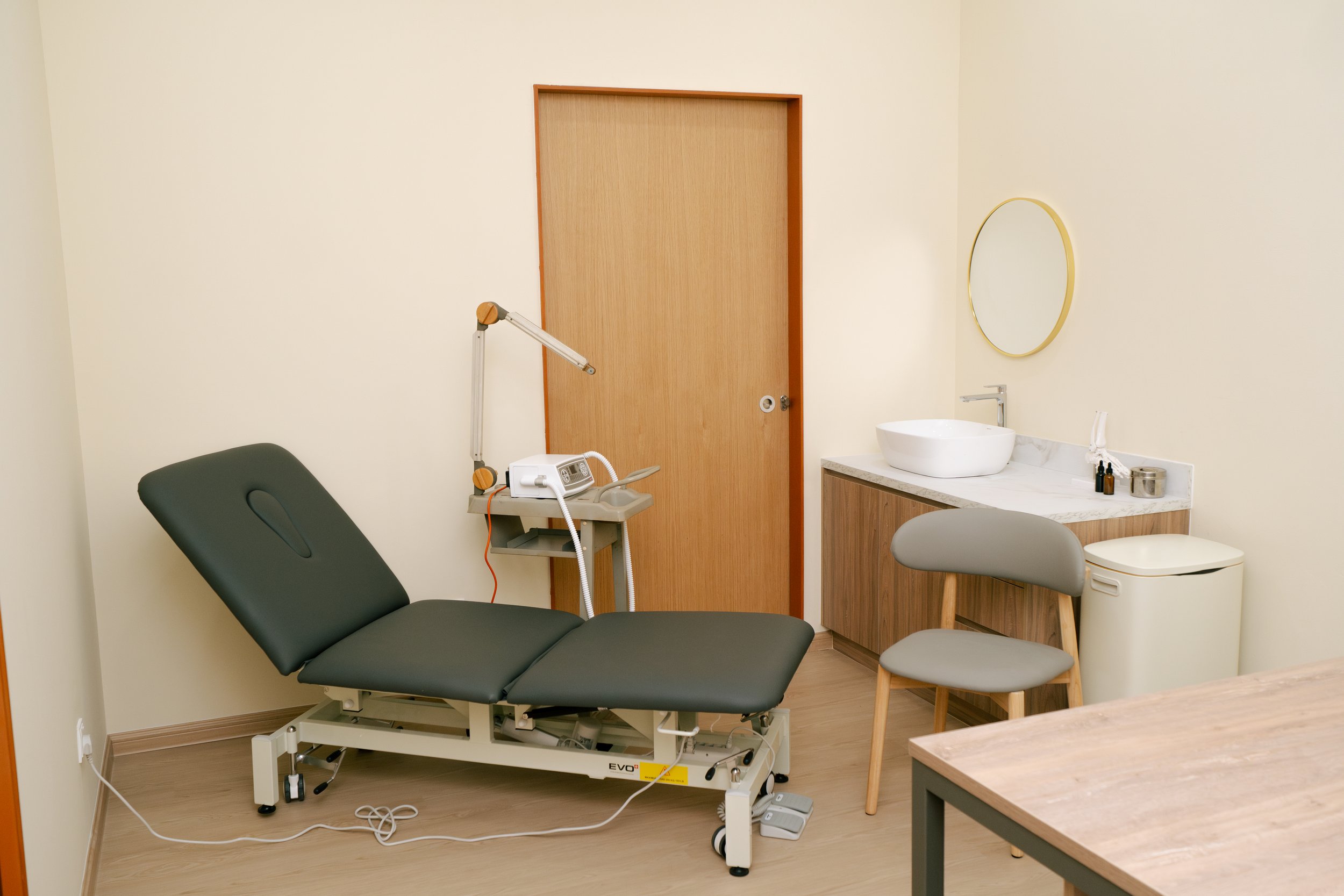
Shin Splints
What Exactly Are Shin Splints?
Your tibia (shin bone) is wrapped in a thin, sensitive membrane (periosteum) and anchored to key muscles—including the tibialis posterior, tibialis anterior and soleus. When your training load outpaces the ability of these tissues to recover, microscopic traction injuries and inflammation develop along the bone—a “red flag” stage that precedes true stress fractures. Early intervention is vital.
Why Do Shin Splints Develop?
High-Impact or Repetitive Load
Rapid mileage, speed or hill increases
Sudden switch from soft trails to concrete or indoor courts
Biomechanical & Structural Factors
Over-pronation or rigid high arches → poor shock absorption
Leg-length differences, bowed legs or knocked knees
Tight calves, achilles or hip flexors; weak glutes/hip abductors
Equipment & Training Errors
Worn-out shoes (< 50 % cushioning) or the wrong shoe category
Running on cambered roads or only in one direction around a track
Inadequate warm-up, cool-down or rest between high-intensity sessions
Recognising the Symptoms
Early Stage - Dull ache at the start of activity, settles mid-session
Moderate Stage - Sharp or burning pain during and after exercise; tender ridge along the inner tibia
Red-Flag Stage - Constant pain at rest or night aches → possible stress fracture
Other clues: mild swelling, “thumpy” tenderness when you tap the shin, or tightness that eases with massage but returns quickly.
How We Diagnose at KL Foot Specialist
Comprehensive History & Palpation – location, onset, footwear, training diary
3-D Gait & Force-Plate Analysis – reveals overload patterns, pronation timing, ground-reaction forces
Muscle-Length & Strength Testing – calves, posterior chain, hip abductors
Imaging When Indicated – ultrasound for periosteal inflammation; X-ray, CT or MRI if a stress fracture is suspected
Accurate staging lets us clear you to keep some activity or mandates short-term off-loading to prevent fracture.
Your Personalised Treatment Plan
Settle Pain & Inflammation - R.I.C.E., short-term NSAIDs (if appropriate), compression sleeves, cross-training swap (swim, cycle)
Correct Biomechanical Overload - Gait retraining (softer cadence, shorter stride), graded-load program (10 % rule), custom orthotics or sports taping to control pronation
Restore Mobility & Strength - Calf & soleus stretches (knee-straight & knee-bent), foam-rolling of anterior shin, progressive calf-raise pyramid, single-leg balance & hip-abductor circuits
Accelerate Tissue Healing - DolorClast® shockwave therapy (3–5 sessions) and DolorClast® high power laser therapy for stubborn myofascial trigger points
Optimise Footwear & Surfaces - Shoe category check (stability vs neutral), midsole wear test, “two-shoe rotation” strategy; shift speed-work from concrete to track/grass
Monitor & Progress - Pain/stiffness log, hop-test tolerance, return-to-run ramp (walk-jog protocol, tempo spacing)
Typical recovery timeline
• Mild MTSS: 2 – 4 weeks
• Moderate MTSS: 4 – 6 weeks
• Stress-reaction stage: 6 – 8 weeks (with modified weight-bearing)
What If You Push Through the Pain?
Ignoring shin-splint symptoms can progress to:
Tibial stress fracture → 4–8 weeks in a moon boot
Chronic compartment-like symptoms (deep tightness, nerve tingling)
Compensatory injuries (Achilles tendinopathy, knee patellofemoral pain)
Prevention for the Long Run
Gradual training progression (≤ 10 % weekly)
Replace shoes every 500–700 km; rotate two pairs
Warm-up (dynamic) & cool-down (foam roll / stretch) every session
Strength train calves + hips 2×/week all year, not just in rehab
Alternate running surfaces & directions; schedule deload weeks
Annual gait & footwear review with a podiatrist
Ready to Run Pain-Free Again?
From weekend joggers to elite athletes, KL Foot Specialist Podiatry has helped hundreds conquer shin splints and return stronger than before.
Book online or call us and take the first step toward pain-free performance today.
